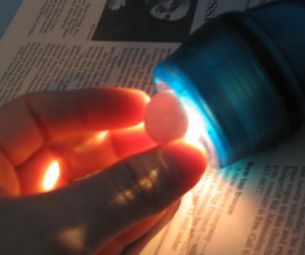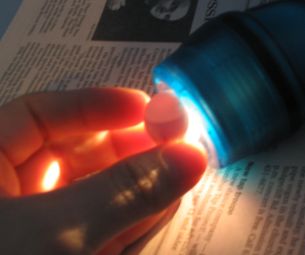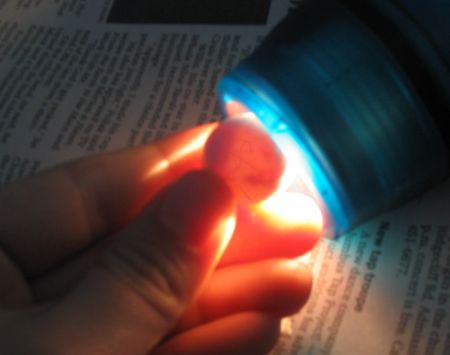Egg Candling

Candling an egg is quite simple. The only thing you really need to be careful of is using
a light source that is unlikely (or less likely) to heat up the egg. I personally use a plain old little
flashlight, one you can pick up at Big Lots for a buck. People also use Maglites and special egg candlers.
Whatever works for you.
About five days or so after the egg is laid, you can take it out for candling. This means
you need to distract the parents from the nestbox. A piece of millet usually works well for me. While
they are chowing down, I take my clean hands and remove the egg. Some people like to run their hands
through their seed bins first, but this is a pointless precaution as parrots have no sense of smell. Do
make sure your hands are clean though, for hygiene. I turn to a dark corner (a shadow will do) and I hold
the egg up to the light. A clear egg is infertile. A fertile egg will show small veins running through it.
You can somewhat monitor the baby as it develops, too. The egg will become completely dark and lighter (it's
true, try it on your gram scale if you like ;)).
The following pictures are all from DIS babies (dead in shell).
The development was halted early on in the brooding process, for whatever reason. I will add more photos
as they become available, of freshly fertile eggs and some completely infertile ones if I can manage.
 
The image on the left is that of an infertile egg. See how the light shines right
through it, giving the entire egg a glow. The egg on the right is there for comparison. It is a dead egg.
The top half is where all the fluid is, which has the exact same appearance as an infertile egg. The bottom
half contains the developing bird. You can obviously tell the infertile egg from one with something growing
inside.

This is where you can tell if an egg is fertile or not. See all those little spidery
veins in the egg? That means it is fertile. The dark spots in this egg are, again, developing embryos.
Compare it to the first photo again. Notice how the first photo is totally clear and liquid.
That's all my photos for now, but the next time I have a clutch of eggs I shall take more
pictures to give you an even better glimpse into candling eggs.
|
|